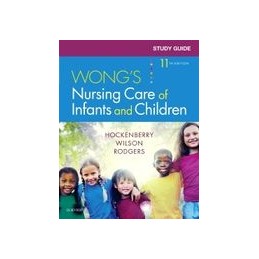- Obniżka


 Dostawa
Dostawa
Wybierz Paczkomat Inpost, Orlen Paczkę, DHL, DPD, Pocztę, email (dla ebooków). Kliknij po więcej
 Płatność
Płatność
Zapłać szybkim przelewem, kartą płatniczą lub za pobraniem. Kliknij po więcej szczegółów
 Zwroty
Zwroty
Jeżeli jesteś konsumentem możesz zwrócić towar w ciągu 14 dni*. Kliknij po więcej szczegółów
Corresponding chapter by chapter to the completely reorganized and revised Wongs Nursing Care of Infants and Children, 11th Edition, this study guide helps you apply pediatric nursing concepts to real-world practice. It assesses, reinforces, and strengthens your understanding of pediatric nursing with learning activities, review questions, and case studies with critical thinking questions. Learning Key Terms - consisting of matching and fill-in-the-blank questions - test your ability to define all key terms highlighted in each textbook chapter. An answer key for the review questions and learning activities is included in the back of the study guide. Pages are perforated, so submitting assignments is easy.
Opis
